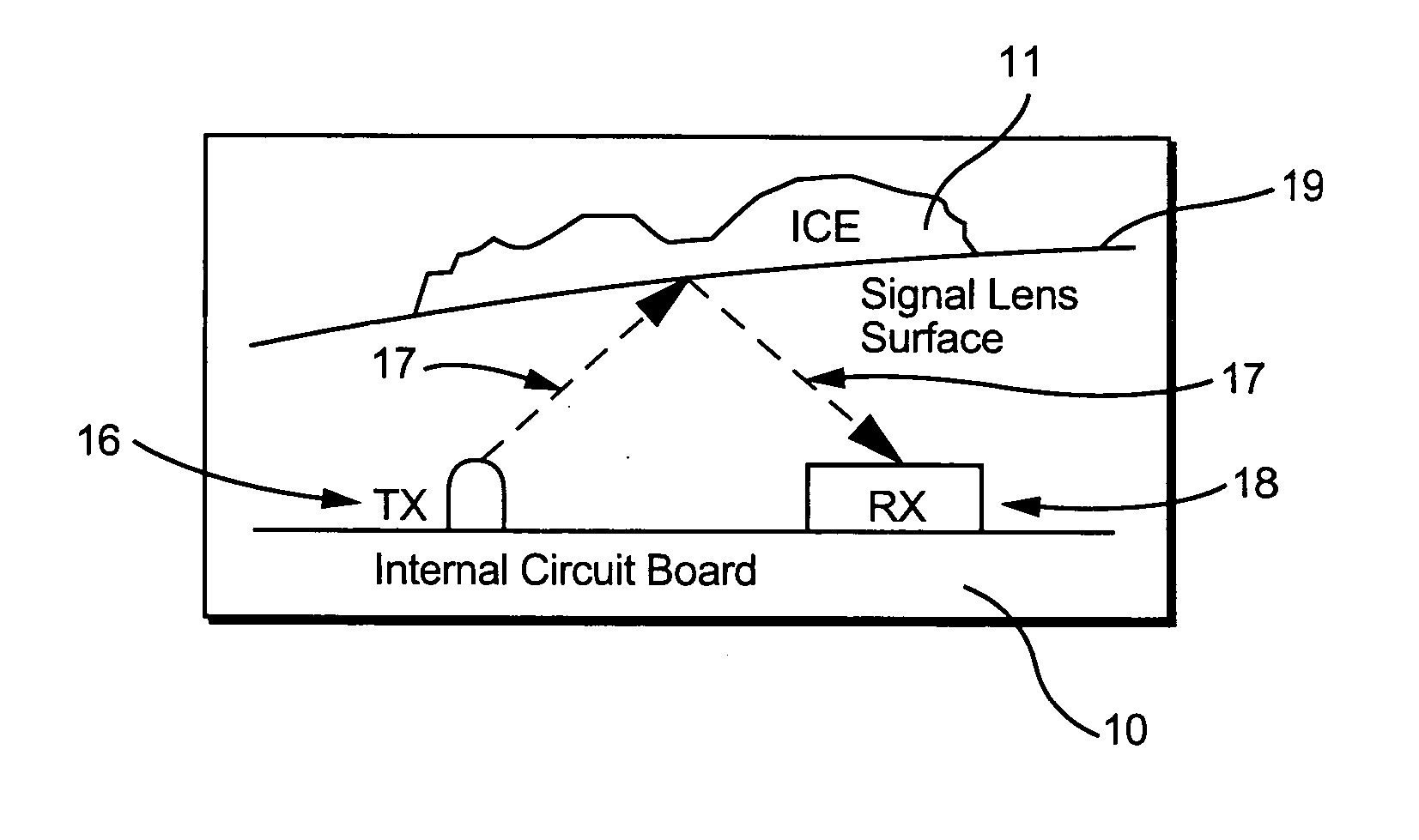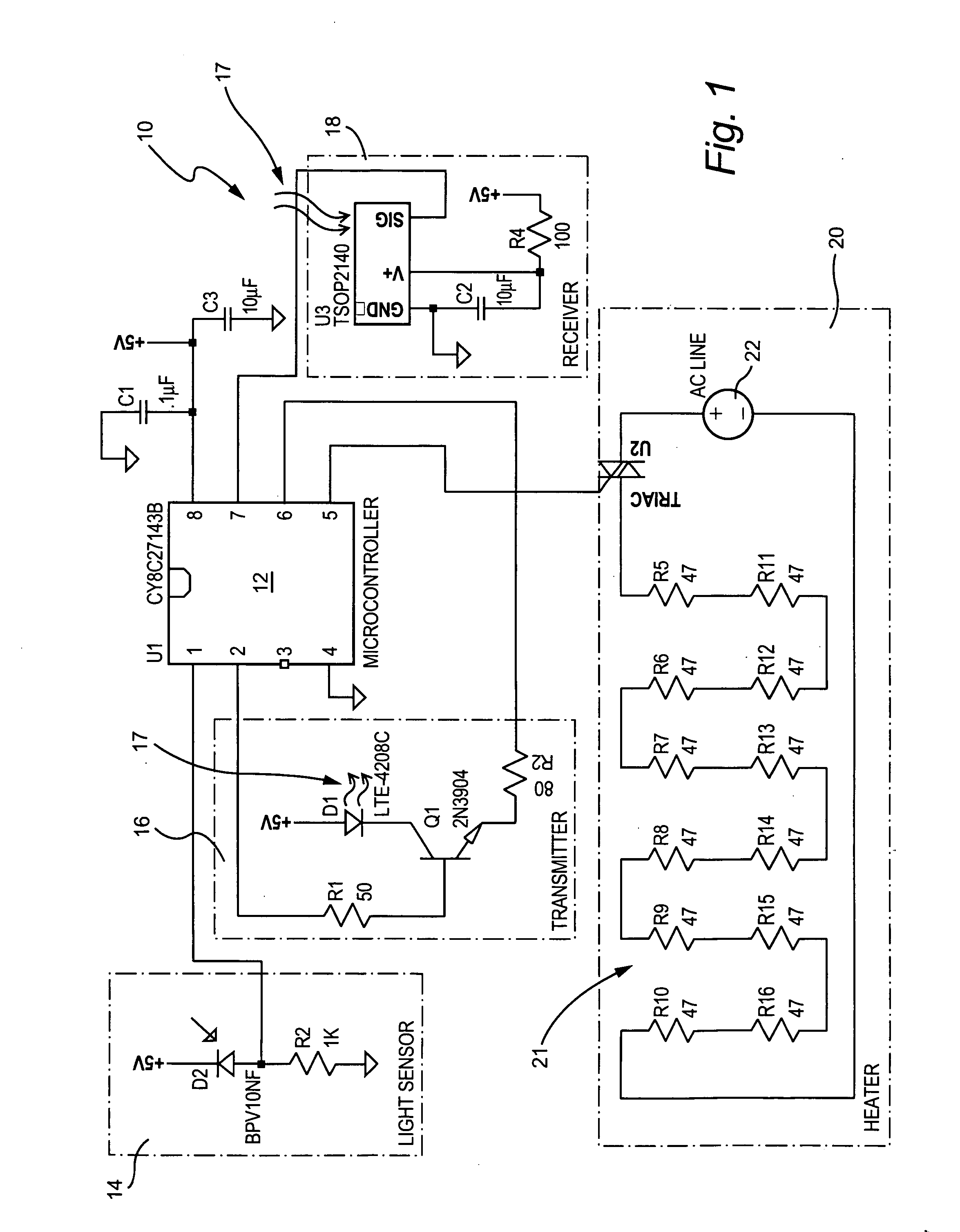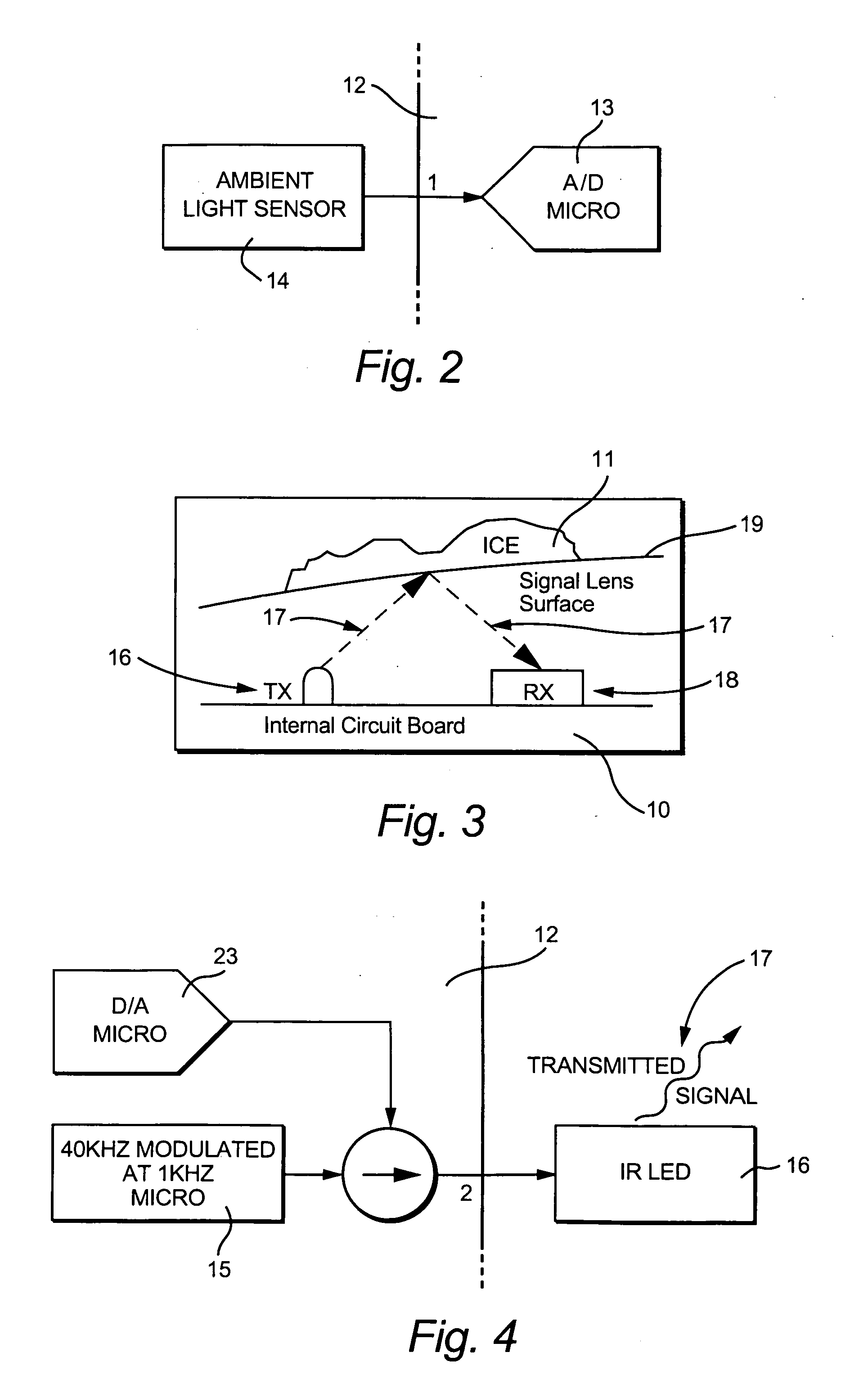De-icing system for traffic signals
a traffic signal and deicing technology, applied in lighting applications, roads, instruments, etc., can solve the problems of reducing the inherent benefit of incandescents, melting most, if not all, snow and ice on the lenses of incandescent traffic signals, etc., to reduce power consumption, reduce heat dissipation, and reduce power consumption
- Summary
- Abstract
- Description
- Claims
- Application Information
AI Technical Summary
Benefits of technology
Problems solved by technology
Method used
Image
Examples
Embodiment Construction
[0017] The present invention is directed to a circuit 10 for detecting the buildup of snow and / or ice on the lens of an LED traffic signal and for eliminating the buildup of the snow and / or ice from the lens of an LED traffic signal.
[0018] The heart of circuit 10 is a microcontroller 12, which senses ambient temperature within the LED signal, initiates the function of looking for snow and / or ice buildup when the ambient temperature falls below a certain set point and initiates the operation of a heater to eliminate ice and / or snow when it is detected. Preferably, microcontroller 12 is a CY8C27143B programmable microcontroller manufactured, for example, by Cypress Semiconductor Corp. Microcontroller 12 is shown as component U1 in the schematic of circuit 10 shown in FIG. 1, which includes an internal sensor to monitor the temperature within the LED signal.
[0019] As shown in FIGS. 1 and 2, the circuit 10 also includes an ambient light sensor circuit 14, which uses a light sensing ph...
PUM
 Login to View More
Login to View More Abstract
Description
Claims
Application Information
 Login to View More
Login to View More - R&D
- Intellectual Property
- Life Sciences
- Materials
- Tech Scout
- Unparalleled Data Quality
- Higher Quality Content
- 60% Fewer Hallucinations
Browse by: Latest US Patents, China's latest patents, Technical Efficacy Thesaurus, Application Domain, Technology Topic, Popular Technical Reports.
© 2025 PatSnap. All rights reserved.Legal|Privacy policy|Modern Slavery Act Transparency Statement|Sitemap|About US| Contact US: help@patsnap.com



